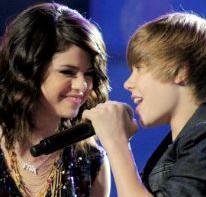Parasocial affection for Bieber turned into rejection-rage for Selena

Selena Gomez and Justin Bieber Karaoke Duet
In 1956, Horton and Wohl published a seminal paper on parasocial interaction. Parasocial interaction is the illusion of a real life, face-to-face, reciprocal relationship with someone you’ve seen in the media but don’t actually know, such as a performer like Justin Bieber. This is not a psychological aberration. The evolution and ubiquity of Internet access, social networking sites, smartphones, YouTube channels, and the rawness of Twitter provide channels of continual exposure to celebrities that can easily create illusions of intimacy.
Biologically, the sense of ‘ knowing’ a celebrity personally makes sense. Media technologies take social cues, such as facial close-ups, eye contact, gestures, and emotions and amplify it all, literally in terms of size and psychologically, in terms of immersive frequency, compelling stories, and pulse-quickening music. The sense of a personal relationship is reinforced by the reliability of these objects of affection. We can really count on them because they show up everywhere and this intimacy and reliability build a framework to which we can add our own brand of fantasies.
For adolescent girls, crushes on celebrities can even be seen as a rite of passage. They provide an experience of love and the fantasy of what a love relationship might be like. Parasocial attachment is not restricted to the young, however. It can provide an outlet for romantic imagination as well as a sense of community and social validation when fans join together.

Celebirity with Adoring Fans: Lord Byron
Fans feeling connected to celebrities is not a new phenomenon. I don’t know if Aristotle or Socrates had followings, but Lord Byron was apparently the ‘Justin Bieber’ of his day in terms of notoriety and appeal, with infatuated women following him about the UK and Europe. Too bad he didn’t have social media. Countless figures have bridged the Byron-Bieber gap: Frank Sinatra, Elvis, Paul McCartney, and Michael Jackson, to name a few. The great thing about the evolution of communication technologies, is that we now have plenty of idols to fill in all the gaps. Something for everyone, and then some.
But the defining feature of a parasocial idol is that they are exactly what the admiring fan needs them to be: perfect.
Perfect, that is, until real life intrudes, like they get a girlfriend or the cat is out of the bag crashing fantasy into reality in some other way.
Part of the adolescent fantasy, and possible an adult one as well, is that of being selected or picked, recognized and valued for our unique special qualities by someone we deem so special. When celebrities step out of their persona and have a real life, it is a little like the discordant jolt of meeting your second grade teacher at the grocery store. It violates our worldview. Ms. Brown is not supposed to exist outside of Room 12.
More pivotal for adolescents, idols breaking the boundaries of parasocial perfection make a gaping hole in the fantasy world that reflects aspirations of lovability and specialness of early identity formation.
We all know, often from personal experience, that adolescence is an emotional roller coaster with hormones raging, bodies changing, and the social world in upheaval. At the core of all that emotional and hormonal turmoil is the task of formulating an independent and valued sense of self. When teens emotionally invest in a celebrity, such as Justin Bieber, the realization that he has chosen another (no matter how unrealistic the chance of him choosing a fan he doesn’t know might be), the teen can experience rejection. When attachments are violated, rage is a common response.
Another task of adolescence is developing emotional control, but it’s a work in progress for several years. The responses to Selena Gomez are teens acting out against a sense of rejection, and against the cold harsh world of reality. Unattractive? Yes. Inappropriate and mean? Yes. Unexpected? Not really.
In spite of the distaste of the hurtful messages hurled at Ms. Gomez across the Twittersphere and elsewhere, for parents there is an upsides in these types of news stories. They provide parents – particularly those of Bieber fans – with a great opportunity to talk with their kids about love, real life connection, disappointment, and bullying. Just keep it focused on Bieber so they’ll listen.
—
Horton, D., & Wohl, R. R. (1956). Mass Communication and Para-Social Interaction. Psychiatry, 19, 215-219.

